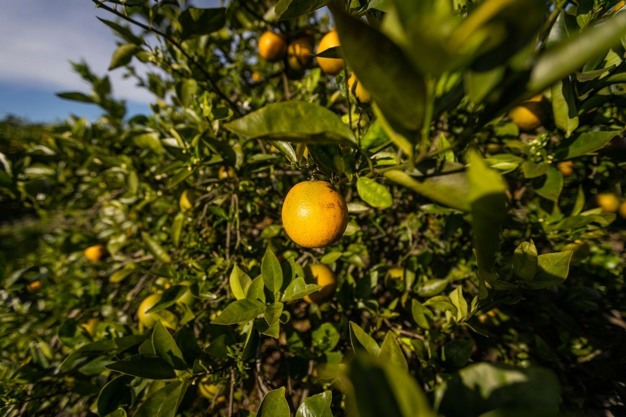Scientists at the University of Florida are testing a new type of citrus tree that can fight off the tiny insects responsible for citrus greening.
The approach involves inserting a gene into a citrus tree that produces a protein that can kill baby Asian citrus psyllids, the bugs that transmit the greening disease. That gene normally occurs in a soil-borne bacterium called Bacillus thuringiensis (Bt).
 A closer look at the Adult citrus psyllid.
A closer look at the Adult citrus psyllid.
This gene provides instructions for the new citrus tree on how to make this protein. Thus, when the gene is put into the tree, the plant produces the protein that kills psyllids. While this approach can kill baby psyllids, UF/IFAS scientists are close to finding a solution to control the adult pests.
"We are trying to deploy a biotechnological solution that is sustainable, easy for growers to deploy and replaces the need for spraying insecticides," said Lukasz Stelinski, an entomology professor at the UF/IFAS Citrus Research and Education Center. "That can't be done completely with the current Bt trees and thus it might require some additional, albeit reduced, insecticide spraying for adults, for example."
So far, scientists have developed the modified tree in the lab and the greenhouse. Now, they must prove this method works in the field – and they're still a few years away from perhaps reaching that conclusion and hope to begin testing the trees in about a year.
UF receives funding from the U.S. Department of Agriculture for citrus greening research, which plays a key role in advancing and accelerating breakthroughs.
 When the gene is put into the tree, the plant produces the protein that kills psyllids.
When the gene is put into the tree, the plant produces the protein that kills psyllids.
Through the new research, scientists have found that the tree is protected because all juvenile psyllids that feed on the tree are killed, Stelinski said.
Before UF/IFAS scientists started this research, they knew that certain Bt proteins could kill other sap-sucking insects, but none were known to kill Asian citrus psyllids.
This protein kills psyllids. It binds to specific receptors on the gut wall, causing pores to form. This disrupts the insect cells on the gut wall, ultimately killing the insect.
In their experiments, scientists at CREC inserted a gene from Bt into citrus trees. The gene yields a protein in the phloem -- the vascular part of a leaf where the psyllid feeds. Ultimately, that protein protects the tree from the psyllid and therefore, from citrus greening.
Bryony Bonning, a scholar and entomology professor on the main UF campus in Gainesville, led the research to identify the bacterial proteins that kill psyllids.
In the most recently published study, UF/IFAS researchers found that the protein derived from Bt can kill the vast majority of the psyllids in their earliest stages. Additionally, no new adults can emerge on the tree.
 For more information:
For more information:
Brad Buck
UF/IFAS
Tel: +1 (656) 347-8422
[email protected]
www.ifas.ufl.edu









